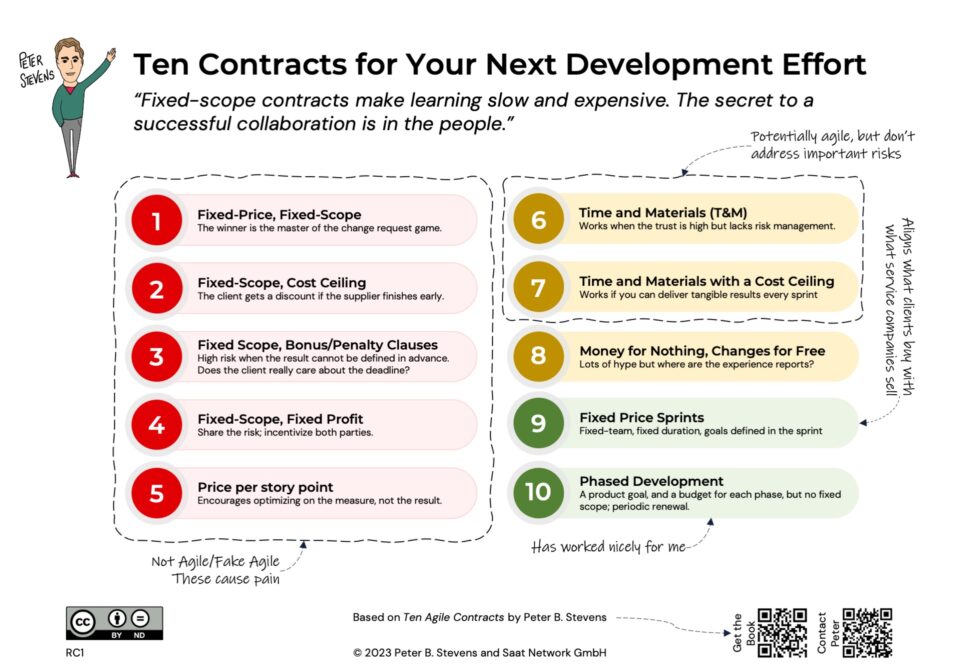How to evaluate a contract for your Agile project
29-05-2019The 10 contracts for your next Agile software project
04-06-2019What do you need to put in a contract?
It can be difficult to trust an organization unless you are dealing with people at the highest levels, because individuals in an organization can be overruled by people higher in the organization.
People come and go, so the people you are dealing with now may not be the same who will be making decisions in the future. And even people at the top of the organization have ups and downs in their power and influence. A contract offers continuity in the face of changes to organization.
Even when working with people you trust and who have the necessary freedom or authority to stand by their word, it can be helpful to write things down. The written word is an excellent tool for recording what two or more people have agreed to.
In my experience, there are seven points which belong in every contract:
- Identify the parties to the contract and where they reside, including address and other contact information.
- Objectives of the project and of the cooperation between the companies. This follows pretty directly from the elevator pitch and product mission.
- An outline of the project structure – Scrum process, key roles and any differences from Scrum which apply.
- Key Personnel – who is responsible at the operational and escalation levels and what is required of these people? This should identify who will play the Scrum roles.
- Payment and billing, including any bonus and penalty clauses.
- Early and normal termination and/or extension.
- “Legal Details.” Depending on local law and legal customs, you may need to limit civil liability, specify the governing law and venue for disputes, ensure severability (i.e. that portions of the contract will remain in effect even if parts of it are found invalid) or include other text to prevent various legal bad things from happening. Sample or reference contracts from your jurisdiction can be helpful (and are cheaper than a lawyer!).
Do you need to include the scope in the contract? Often it is present (and in the government contracts I have had the privilege of signing it was included by law), but fixing the contract in scope also renders scope inflexible. If possible, it is better to specify how you will manage the scope (e.g. product backlog, sprint contract), but operational details should be left to the project team.
Points 2 through 6 determine the playing rules for your project. If you get these points right, you will have the foundation for a good project. But what are the best rules? There are many different kinds of contract, from time and materials to fixed price, fixed scope.
The next chapter will look at widely used contract forms in detail, evaluating them against the criteria set out in the previous chapter.
You can get the whole book now, or you can read it a chapter at a time as I publish it here under the label ten contracts. To download the e-book or pre-order the physical book visit https://saat-network.ch/ten





